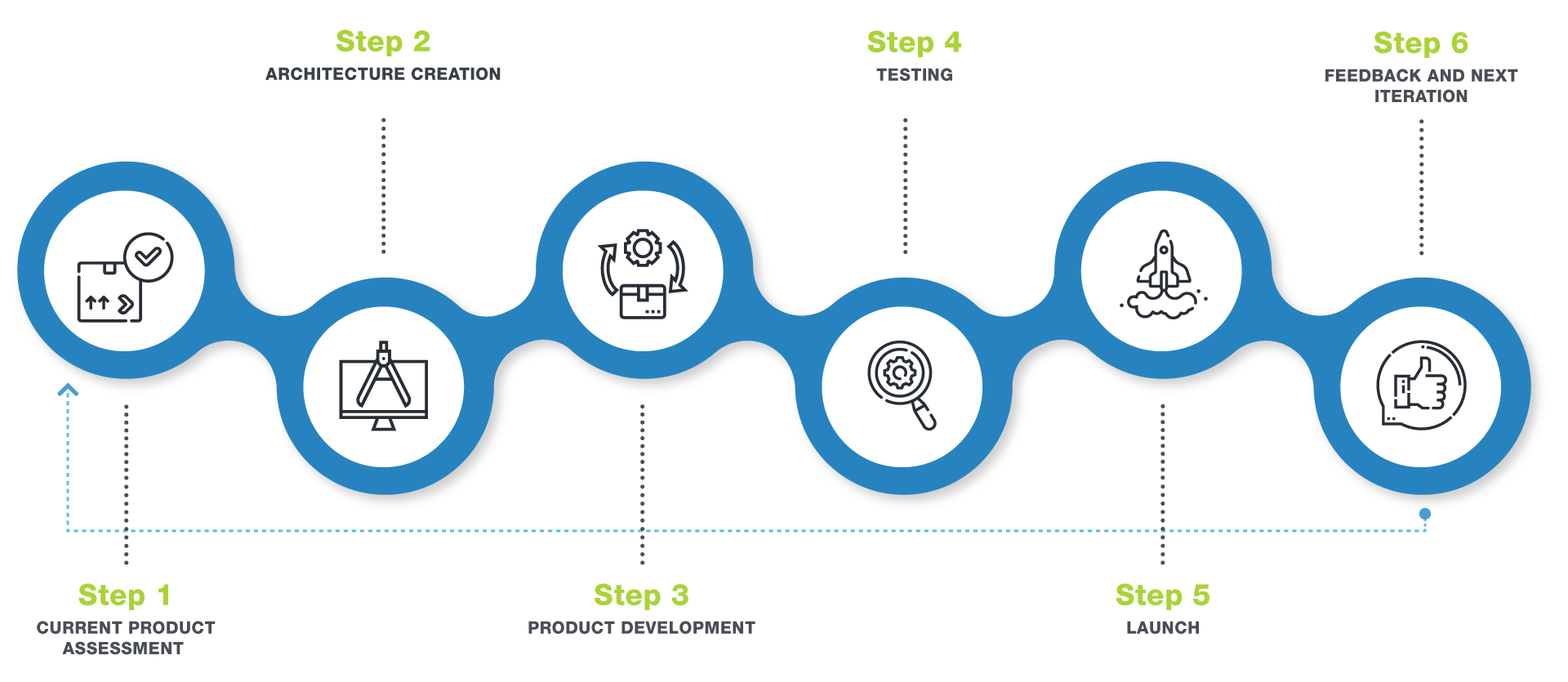Do any of the following scenarios speak with you?
- You had to move, the deadlines were tight and the opportunity window small. You chose to develop fast and ship rather than wait, create a “perfect” product and lose the opportunity. Now that you have breathing space, you’re looking to do it the way it should’ve been done.
- Technology has evolved, and you find your product on the wrong side of the bell curve. What used to be cutting edge is now legacy.
- You are facing challenges to migrate your product to a different delivery model like Saas, Paas or cloud based delivery.
- The UI/UX needs an overhaul.
A product re-engineering initiative can help you across all these fronts.
Our Product Re-Engineering Flow
Step 1: Current Product Assessment
Why the need for a re-engineering exercise? Is the product not satisfying the market anymore? Competitors come up with a competitive or better offering? Architecture unscalable? Newer and better technologies available? Overhaul needed in the code? Need for new features that could not be created using previous architecture?
There can be myriad of reasons for a re-engineering exercise. We work with you to understand the pros and cons of your current product, the challenges you face with it, map out its limitations and then create a customized re-engineering roadmap for you.
Step 2: Architecture Creation
Once the developmental vision is clear, appropriate architectural viewpoints such as 4+1, Zachman Framework, RM-ODP, DoDAF, etc. are chosen to develop the product architecture. Next, an appropriate pattern or set of patterns such as client server, peer-to-peer, data centric, etc., are chosen to develop the software or app. Security, reliability, scalability, high availability, interoperability, maintainability, recoverability, performance, compliances, and user experience are the factors kept in mind while developing the software architecture and determining the tech stack to be used.
Step 3: Product Development
Development of a product being re-engineered varies from one being made from scratch. Almost always the product is in use. Number of functions, number of users, technologies used, all add to the complexity of re-engineering. Thus, along with using the best product development practices, we ensure that re-engineering is done in phases, in a way that users of the product are disturbed the least.
Step 4: Testing
All the testing methods and practices mentioned in the section of product engineering are practised here as well.
Step 5: Launch
The code has been cleaned up, performance & security issues addressed, new features built in and the product works seamlessly with other software exactly the way you would want them. Time to go live.
Step 6: Feedback and Next Iteration
The re-engineered product now allows you to compete better and fulfils a market need. In the next stage of the lifecycle, we work with you to develop your re-engineered product into a major competitive advantage for you.
Get in Touch

